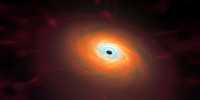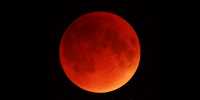Last year, a comet traveling for the inner Solar System was identified as the largest yet seen, with a size closer to that of a small planet than a regular comet. Early estimates of its size were hazy, but we now have something much more accurate, with a diameter of 137 kilometers (85 miles) – roughly the same as the distance between New York and Philadelphia. Dr. Emmanuel Lellouch of the Paris Observatory told New Scientist, “We have confirmed the estimate.” “It’s the largest comet ever discovered from the Oort cloud.”
The earliest photographs of Comet 2014 UN271/ (Bernardinelli-Bernstein) were taken in 2014, when it was as far away as Neptune, but it was not identified as significant for another seven years. It was estimated to be somewhere between 100 and 370 kilometers (60-230 miles) wide at the time, with the lowest number nearly matching Comet Sarabat, which was spotted in 1729 and was later judged to be 100 kilometers (60 miles) broad.
Later estimations of 150 kilometers (90 miles) had large error ranges as well. Although Bernardinelli-Bernstein is moving closer, it will never cross Saturn’s orbit, making it difficult to search up safe but accurate size measurements. Microwave radiation was employed by Lellouch and co-authors to achieve precision that was not possible with visible light.
Their manuscript was accepted for publication in Astronomy and Astrophysics Letters, with an arXiv.org preprint. Rather than trying to figure out how much space 2014 UN271 takes up in the sky, Lellouch measured the amount of heat it emits and utilized that to compute the comet’s surface area. It’s difficult to measure the size of an object that’s 100-200 kilometers (60-120 miles) wide when it’s more than 3 billion kilometers (1.9 billion miles) away. As its ice warms up, it becomes much difficult to release gas and particles, forming a cometary cloud surrounding the solid object.
Lellouch and co-authors used the Atacama Large Millimeter Array to study C/2014 UN271 at four wavelengths between 1 and 2 millimeters, avoiding the ones where dust is brightest. As a result, they may conclude that the contribution from comet dust was almost definitely negligible — practically everything was coming from the nucleus itself.
The brightness of the different wavelength bands shows a composition that is characteristic of comets that reflect 5% of the light they receive. To produce this much radiation, Lellouch and co-authors calculated that Bernardinelli-Bernstein would have to be 13717 kilometers (8510 miles) broad. The ambiguity stems from a lack of knowledge about the comet’s sphericality as well as residual uncertainty regarding its reflectance.
The largest comet we have previously been able to measure relatively precisely is Hale-Bopp, which measures 746 kilometers (464 miles). Despite the fact that the estimate is on the lower end of the initial range, C/2014 UN271 is still larger than all but one of the active Centaurs, which orbit between Jupiter and Neptune and occasionally emit comet-like outbursts. The authors point out that this is by far the most distant measurement of a comet’s albedo (reflectivity), giving astronomers a once-in-a-lifetime opportunity to see how Bernardinelli-Bernstein changes as it approaches halves its present distance from the Sun. This will help to clarify whether the discharge of volatile material alters the albedo of a comet.
















